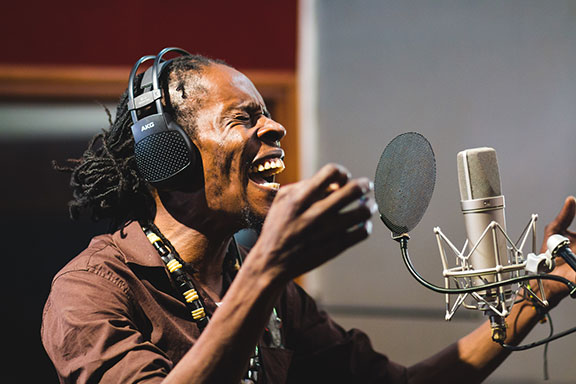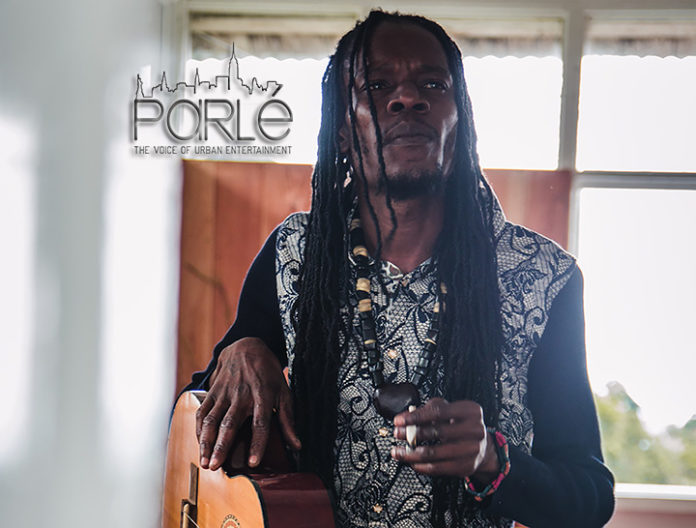Exclusive Interview with Ke Ke Hi
Having first come of age in Papine, one of the roughest, toughest ghettos in Kingston, Jamaica, Ke Ke Hi has been on an ambitious musical journey that dates all the way back to 1992. Hi, who cites, in no particular order, Sister Nancy, Brigadier Jerry, Major Mackrel, Dennis Brown and Sugar Minott, as some of his biggest musical heroes, recently unleashed the official lead single, “American Dream,” from his soon-to-be released debut EP, Rolling Like a Stone.
Check out our exclusive interview with Ke Ke Hi below…
Parlé Mag: All right Ke Ke, so what are your favorite hobbies that you have; what do you like to do in your spare time?
Ke Ke Hi: We never have spare time, we always have to create time. You know, take the kids to the park, making kites for the kids or go fishing. You know, those are the things that I really full joy.
Parlé Mag: Where were you born? And, how was it growing up in that environment?
Ke Ke Hi: I was born in Saint Ann’s, but as a baby I was grown in Papine. We talking about Saint Andrew now, Kingston 6 to be exact, you know. So it’s like a total different upbringing than from the countryside where like Bob (Marley) and Marcus (Garvey) them come from, Saint Ann’s, you know. We were more like brought up in the ghetto, in the garrison, or places where them say is the ghetto. You see the deplorable condition, and you know you hear gunshots firing, and all these types of incidents happening. So it is a total different thing from Saint Ann’s and the countryside of the world.
Parlé Mag: I understand that education is very important to you…
Ke Ke Hi: Education is not a thing that is limited because you leave a certain institution. Education is a thing that you can always advance, you know, keep on learning. Every day is something new, so you never stop learning.
Parlé Mag: Where does your moniker originally derive from?
Ke Ke Hi: I had names before like Diamond Stone, which was my first name as a musician, you know, Diamond Stone. And you have Little Chris, Little Thirteen, and then now I’ve become Ke Ke – Hi.
Parlé Mag: How have your life experiences helped influence the artist you’ve become/are growing into?
Ke Ke Hi: What influenced me most of all to be who I am, to strive to become within this time is that as a younger youth, growing up, even though things were deplorable around me, and you have guys all around with guns, we did have some positive people, who did realize as a younger youth in the community that I had musical ability, you know. So that was very important for adults to see the ability of the younger youths them around. So that now, you know, people see I and I as a musician, and then you start to see yourself as such. So you don’t get fi let go, and go do other things… you just always strive to be that individual making music in such environment. So that really was the first thing that encouraged the whole idea of who I can become as an individual.
Parlé Mag: What studios have been used in the development of Rolling Like a Stone?
Ke Ke Hi: This album has been worked on in studios such as Mixing Lab; we have Jakob’s Studio; we have our own studio, which is the first solar studio in Jamaica. That is Sugashak Records. We have some recordings that have been done in the biggest of studios, as well as the smallest of studios, you know…
Parlé Mag: Who all exactly are your primary musical influences?
Ke Ke Hi: The first time I ever see a recording studio, I was able to record, that was in like 1992, at Penthouse Studio. You know Simpleton, who is a family member of my mine that sang the song called “Coca-Cola Bottle Shape?”
…Sugar Minnott had met me 1992, December, at Penthouse, as a younger youth. Invited my brethren and I to come to Robert Crescent. There I could see man like Dennis Brown, and see a wider set of people, who a deal wit de same thing like I and I. The influence was great. From Papine, we talking about the grass root now like Sister Nancy, Brigadier Jerry, Major Mackerel, so the musical influence was always there, it was always alive, and vibrant.
…My mother, making clothes for Judy Mowatt. Bob Marley youth, coming down in the ghetto. Ziggy, dem and, you know, you’ve seen it, you know.

Parlé Mag: What is your live show experience like?
Ke Ke Hi: Well they can never know what to expect, seen. It’s just a great vibes, seen. It’s just a new expression.
Parlé Mag: If you could work with an artist from anywhere in the world, and any time period, who would they be and why?
Ke Ke Hi: Well, I would do a nice song with Sade. Yeah, ’cause the mood, you know. Yeah. Big, big artist dat…
…I love to do music with every living one… even the Grasshopper, you know? Even the Birds, you see it? ‘Cause it’s just a special sound. So I don’t really have a one that I would love to do a song with… I would do a song with an artist that has no name, ’cause, you know, it’s just music. Even the wind that’s blowing…
Parlé Mag: What was the inspiration for your song, “American Dream”? While I clearly here a deeper meaning of hope and pushing through anguish and struggle, I’d like the artist to elaborate a bit if possible…
Ke Ke Hi: The song, “American Dream,” the inspiration, really behind this is dreams coming to a reality. Because remember, these songs were a personal moment, then getting this thing together, like a dream. And then, you have a brethren that say that song can work. So it’s like the dream, coming to a reality, day by day. Every effort bringing such thing more to a reality. The whole energy, the whole difference of music. Because we make music, we don’t only make Reggae music, we sing music. Sometimes music come crying. Music nah always come, “Oh… Yuh find a punch”…no.
…For instance, Mr. Christopher Kaufman, you know, Jako… these people are some of the most integral, it’s like the backbone. The whole structure, of this mission. And along the journey now, true with such blessing, we have attained other people on the mission who realize that we have something going, or something creating, or something to be created. We are there pan a mission.
Parlé Mag: What do you want listeners to take away from this EP, Rolling Like A Stone? Is the goal to inspire, to teach, to relate? And, what should we feel/understand after this record?
Ke Ke Hi: Well to take away for this album, is to listen to the songs, and realize that we are not alone. And out of music come an inspiration to fight, to struggle and overcome, the conditions. Or even if you are wealthy, then you realize that there are greater things to be done, seen. So it’s just that. Once you listen to the tracks and realize that if you are down and it can encourage you up.
…It’s not even much a feeling, but to know, that we are not alone. Enlighten the mind, and enlighten the man, to a newer day. And remember that even diamonds are created under pressure, through pressure. So it’s just that no matter how rough it may seem, we are all diamonds waiting to be discovered.
Parlé Mag: What’s it store for Ke Ke Hi?
Ke Ke Hi: Greatness, more hard work. Working to put the dream to a reality. Yeah…putting this thing together.
Stay Connected with Ke Ke Hi:
www.kekehi.com
Facebook
Twitter
Instagram
Readers Also Liked:
 [INTERVIEW] International Afro Pop Trio, SHiiKANE Make History In Music
[INTERVIEW] International Afro Pop Trio, SHiiKANE Make History In Music
Nas & Lauryn Hill Set Dates For Joint North American Tour
[INTERVIEW] Goapele Is In It For The Long Haul With Her Soulful Sound

